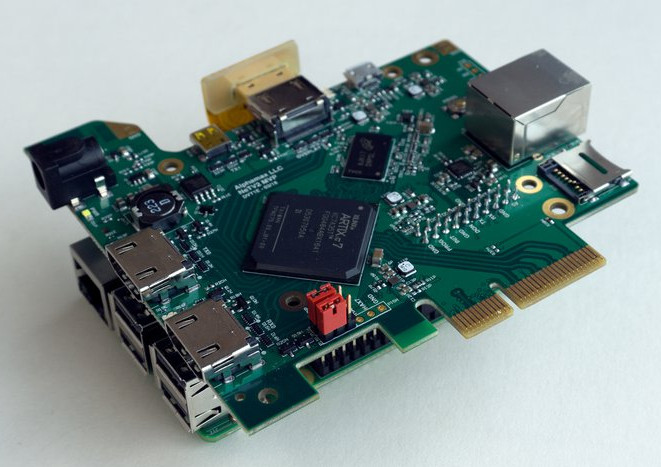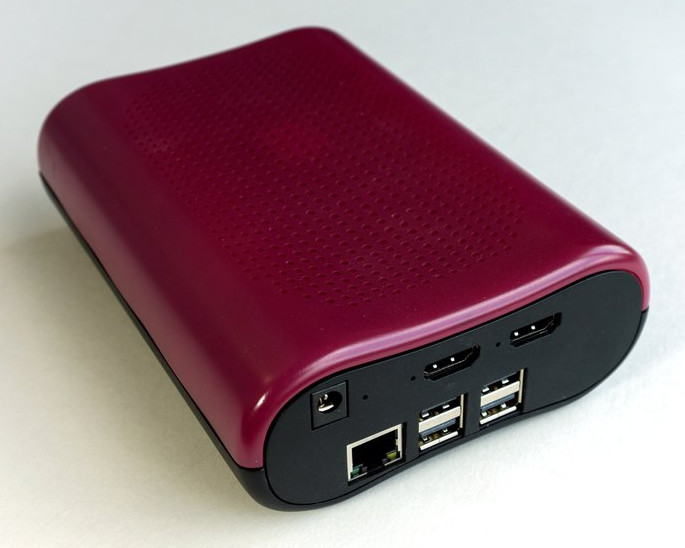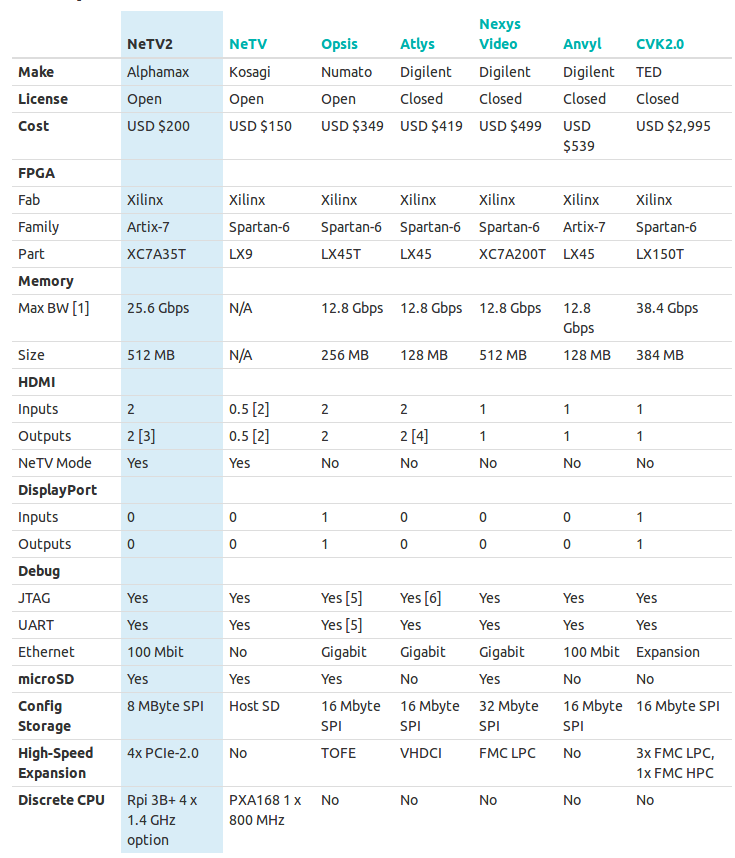Chumby NeTV was an open source hardware Linux IPTV media player based on a Xilinx Spartan FPGA and a Marvell Armada 166 processor, and unveiled in 2011. Many years have passed since then, and now Bunnie Huang has come up with a new version.
The NeTV2 development board is also optimized for open digital video application, but based on a more powerful Xilinx Artik-7 FPGA, and a Raspberry Pi 3 B+ can be added for things like seamless JTAG configuration and overlay video generation.

Key features and specifications:
- FPGA – Xilinx Artik-7 XC7A35T-2FGG484 (available with XC7A50T option during campaign only)
- System Memory – 512 MB RAM, 32-bit wide DDR3-800
- Storage – micro SD card, 8 MB SPI flash
- Video Ports
- 2x HDMI type A inputs
- 1 x HDMI type A output
- 1 x HDMI type D output.
- One input/output pair configured for in-line ‘NeTV mode’ video filtering.
- Max Video Bandwidth – 1920 x 1080 @ 60 Hz
- Connectivity – 10/100M Ethernet
- USB – 1x micro USB port
- Expansion
- PCI-express 2.0 x4 with “hax” GPIO extensions on optional/unused pins
- Optional Raspberry Pi 3B+
- Debugging – JTAG
- Power Supply – 12 VDC via barrel jack, or 12 VDC via PCI-express; 10 W max operating power
- Dimensions – 160 mm x 120 mm x 51 mm (for optional plastic case)
 The system is optimized for use with migen/LiteX, an open source Python-based hardware description language that works with Xilinx’s tools for synthesis, placement, and routing.
The system is optimized for use with migen/LiteX, an open source Python-based hardware description language that works with Xilinx’s tools for synthesis, placement, and routing.
The NetTV2 works has two modes of operation selected by jumpers:
- NeTV Classic Mode (default) where the bitstream allows the addition of encrypted pixels to an encrypted video stream, without decrypting the video stream (due to legal reasons).
- The Libre Mode – geared more toward developers – works only with unencrypted video feeds, but has full access to the entire video stream.

If you are based in the US, the capabilities of the platform are however limited for legal reasons, namely section 1201 of the DMCA that make it illegal to circumvent the protection on encrypted video feeds, even for your own private use. So for example, while using NeTV classic mode described above, while it’s possible to overlay opaque text on the video, it’s not feasible to add text with a transparent background which would require decryption the video to apply alpha blending. The EFF, Bunny Huang and others have however filled a lawsuit to change the situation, so we’ll have to see how it goes. Bunnie goes into more details about it in NeTV2 announcement blog post.
NeTV2 has been launched on Crowdsupply with a $15,000 funding goal. Rewards start at $200 for NeTV2 board only with XC7A35T FPGA, but so far the most popular perk is the $320 “NeTV2 Quickstart Package” which adds a Raspberry Pi 3 B+, an 8 GB microSD card with pre-loaded base firmware package, a power supply, a custom HDMI Flex Jumper, with everything assembled into the red and black case shown above. Shipping is free to the US, and adds $30 to the rest of the world. You’ll have to be patient, as the solution is only expected to ship by the end of May 2019.

Jean-Luc started CNX Software in 2010 as a part-time endeavor, before quitting his job as a software engineering manager, and starting to write daily news, and reviews full time later in 2011.
Support CNX Software! Donate via cryptocurrencies, become a Patron on Patreon, or purchase goods on Amazon or Aliexpress




